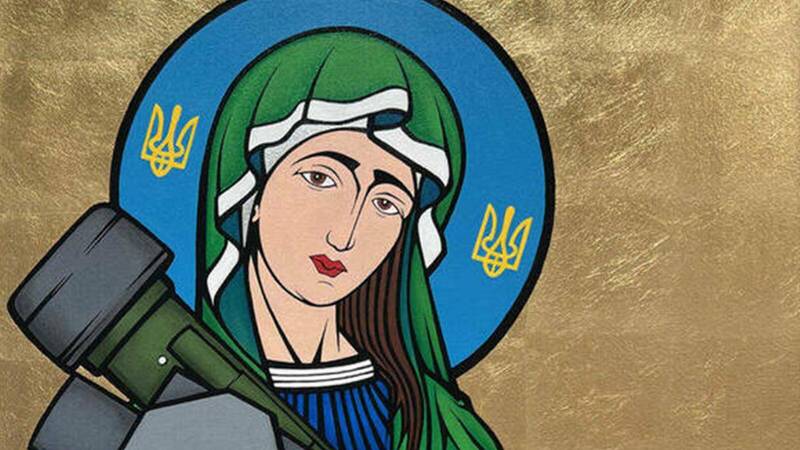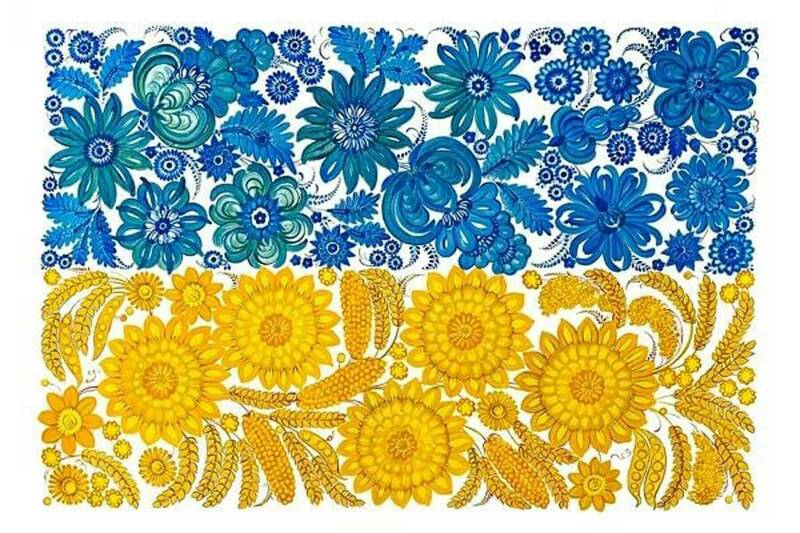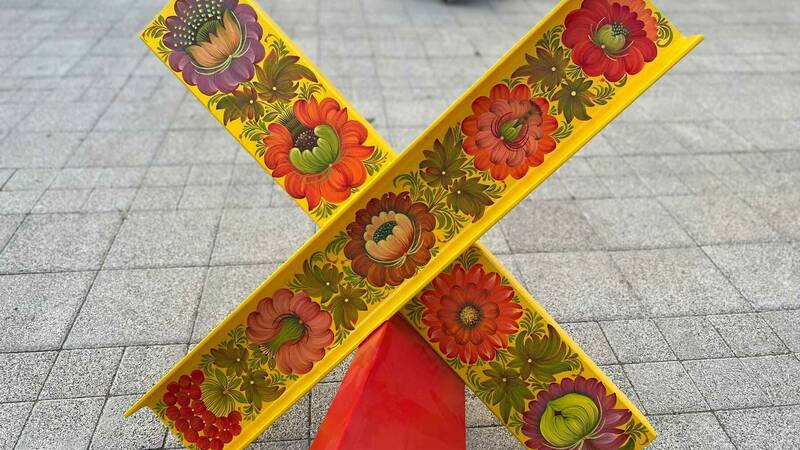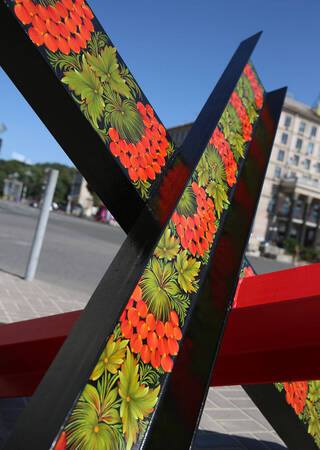
Petrykivka Hedgehogs
Ukrainian Art as Protest and Resilience
Research by Bella Mittleman '24
Artist: Varvara Logvyn
Format: Public art
Placement: Public spaces, social media
One painful barometer for the circumstances in Ukraine is the visual changes in once-familiar environments. Since the beginning of the full-scale invasion on February 24, 2022 the anticipation of Russian advancement has lined many areas of the country with robust, steel contraptions known as “hedgehogs.” Massive, spiked, and ominous, these beams, which form a defensive barrier even when tipped over, were first utilized by the Soviet Union in World War II to obstruct Nazi tanks.
For the artist Varvara Logvyn, upon returning to Kyiv after taking refuge in Western Ukraine, it was alarming to see the familiar streets of her hometown tainted by these military devices. From her perspective, the sight of the hedgehogs did not provide the assurance of protection, but rather a reminder of her country’s vulnerability.
Anti-tank "hedgehogs" in Independence Square, Kyiv painted in the traditional petrykivka style by artist Varvara Logvyn. Photos used with permission from the artist.
Despite this development, Logvyn was determined to alleviate this feeling of unease with her painter’s touch. The sturdy shafts are an unusual canvas, but when Logvyn uses intricate brush strokes to depict rich floral compositions on these anti-tank hedgehogs, she deploys a visual symbolism that demonstrates how the preservation of Ukraine’s culture is one key to the nation’s resilience.
The technique Logvyn uses is the popular Petrykivka decorative painting, a Ukrainian tradition dating back to the pre-Christian era. The distinctive brush movements that illustrate vibrant flowers and birds were originally painted on the walls of homes but have since become a hallmark of Ukrainian folk culture. Logvyn studied the technique for nearly a decade and in the traditional method, she uses paint brushes made from cat and squirrel hair.
It is an intricate, time-consuming craft, but through the use of the classic floral motifs, Petrykivka painting reflects a historical evolution of Ukrainian identity. As Ukrainian painter, Oksana Pikush has explained, “Petrykivka painting is not just flowers and birds, it’s a philosophy of freedom and individuality… A cock is a symbol of awakening when the sun rises, but it is also an awakening of the soul, which is now associated with the renaissance of Ukrainian culture and statehood.”

Often designated as the soul of Ukraine, Petrykivka painting utilizes these natural symbols to embody the character of the country, its vibrancy, and a distinctive Ukrainian heritage carried across generations. Maria Yanenko, a Ukrainian refugee in San Francisco, displays her Petrykivka paintings in the city’s Refugee Eye Gallery. Showing how traditional artistic techniques are maintained over time, she follows in the footsteps of her mother, grandmother, and even more distant relatives when she paints the Ukrainian flag in the authentic Petrykivka style.
Beyond the beauty of the art itself, the preservation of Ukrainian folk art has been a tool for resistance throughout history. During the Soviet era, traditional Ukrainian embroidered garments known as vyshyvankas were recast by the Soviet Union as a pejorative, reflecting an inferior status of Ukrainian peasantry. However, contemporary Ukrainians have reappropriated the garment as a positive, nationalist symbol. The Soviet era also saw attempts to extinguish Ukrainian artistic traditions. Specific policies involved destroying hundreds of Petrykivka paintings but ultimately failed to destroy the craft itself. Since February 2022, traditional folk art has seen another renaissance. Murals of Ukraine’s most prominent folk artist, Maria Pryimachenko, were showcased internationally, while authentic Petrykivka ornaments have experienced a resurgence in popularity.
Material culture has the unique ability to create representative movements of solidarity and to express the resilience of Ukrainian identity and heritage. Varvara Logvyn claims that this project is “my way to talk with the world about Ukraine, about our war, about our values. We have to defend our culture. Culture is the basis of a nation, and [Petrykivka painting] shows that Ukraine is very bright.” Anti-tank hedgehogs were created for the purpose of safety, but Logvyn’s work goes beyond the physical, representing the protection of Ukraine’s unique identity.
Research by Bella Mittleman ’24
Header image: “St Javelin” by Chris Shaw, acrylic and metal leaf on canvas, completed in March 2022. Image used with permission from Chris Shaw and saintjavelin.com.
Art by Varvara Logvyn. Images used with permission from the artist.
Read the project introduction and background.

